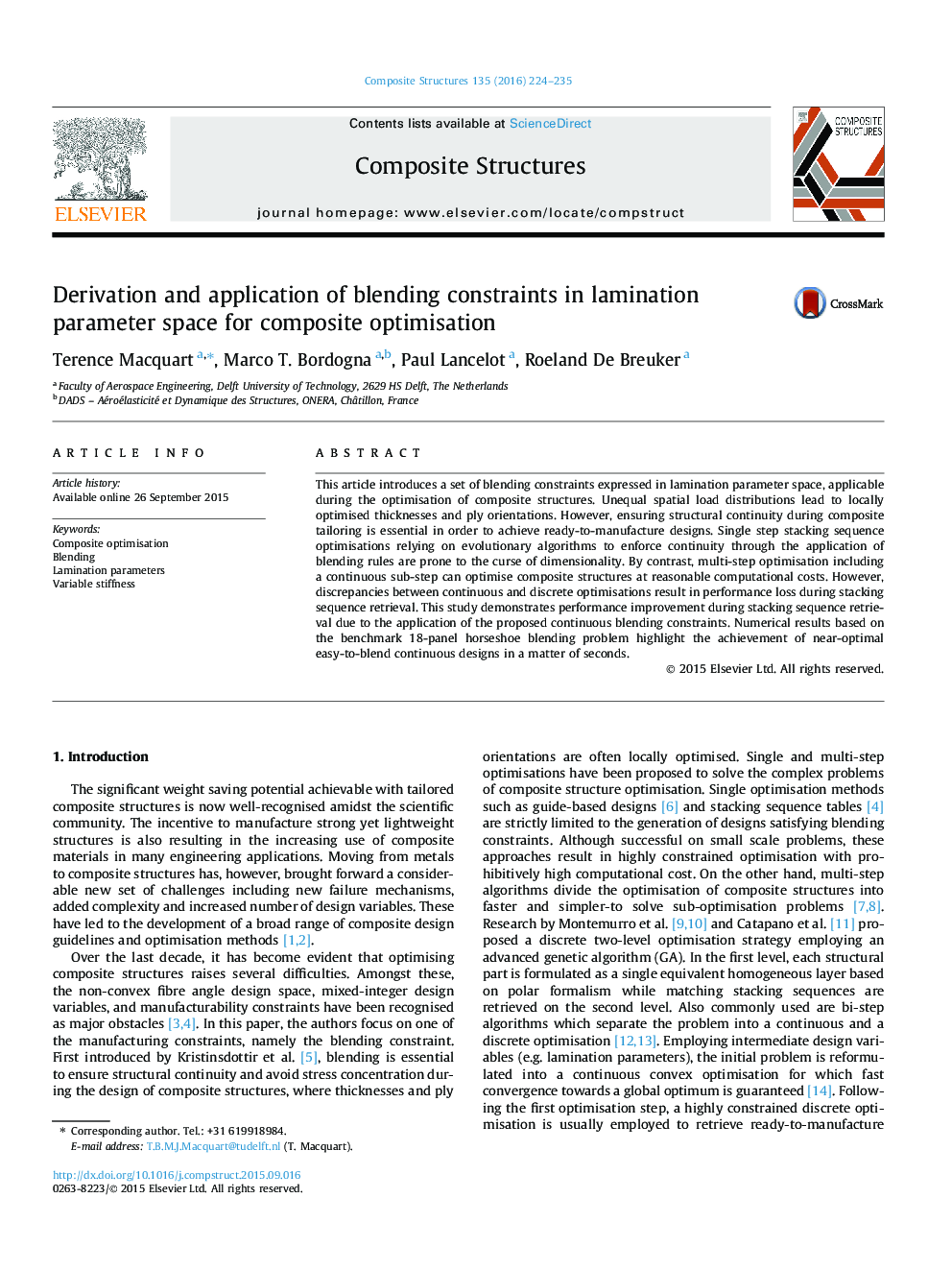| Article ID | Journal | Published Year | Pages | File Type |
|---|---|---|---|---|
| 251182 | Composite Structures | 2016 | 12 Pages |
This article introduces a set of blending constraints expressed in lamination parameter space, applicable during the optimisation of composite structures. Unequal spatial load distributions lead to locally optimised thicknesses and ply orientations. However, ensuring structural continuity during composite tailoring is essential in order to achieve ready-to-manufacture designs. Single step stacking sequence optimisations relying on evolutionary algorithms to enforce continuity through the application of blending rules are prone to the curse of dimensionality. By contrast, multi-step optimisation including a continuous sub-step can optimise composite structures at reasonable computational costs. However, discrepancies between continuous and discrete optimisations result in performance loss during stacking sequence retrieval. This study demonstrates performance improvement during stacking sequence retrieval due to the application of the proposed continuous blending constraints. Numerical results based on the benchmark 18-panel horseshoe blending problem highlight the achievement of near-optimal easy-to-blend continuous designs in a matter of seconds.
